In Part 1 of my Tobacco Cessation blog series, I recapped the National Association of Community Health Center’s (NACHC) adaption of the Million Hearts® Tobacco Cessation Change Package (TCCP). The adaptation provides tips and resources tailored to health centers, including examples from centers involved in the project. Now, we are going to review the Azara tools available to support the change concepts laid out in the TCCP.
Point of Care Tools
Azara DRVS works in concert with the TCCP, allowing users to identify patients needing to be screened for tobacco use, patients needing tobacco cessation counseling, and active tobacco users. A multidisciplinary care team—from the primary care team to dental providers to pharmacy staff—can use the Patient Visit Planning report to identify patients needing a tobacco screen or tobacco cessation counseling. With the appropriate alerts and training, the care teams members are positioned to satisfy open alerts.

Practices with the EHR Plug In, will be able to see the alerts from the patient’s chart in the EHR.

To see how well different care teams are closing the tobacco alerts, use the Alert Closure – Point of Care (POC) measure. When filtered to the tobacco alert types, you are able to see if the alerts were closed at the time of the visit. Discrepancies in closure rates between providers, locations, or services lines could become an opportunity for training and education.
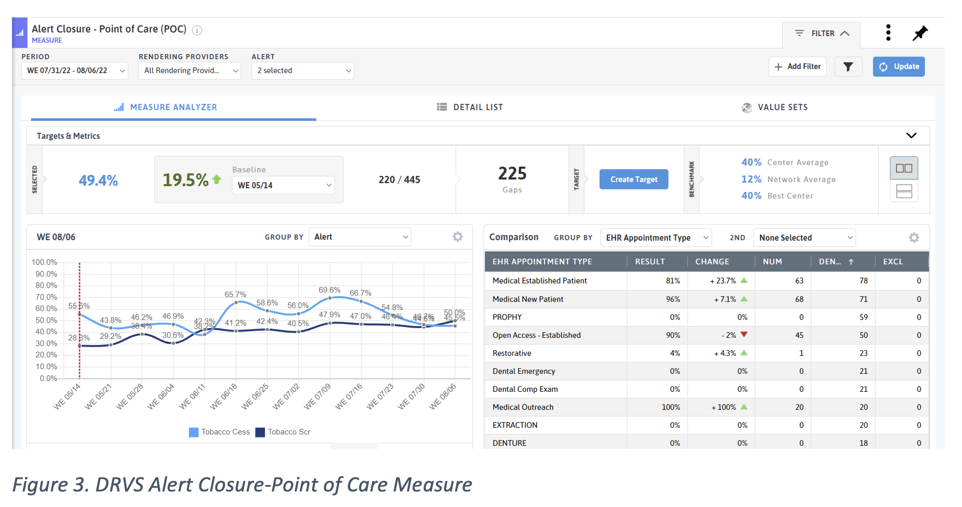
Population Management
To track trends at the population level, utilize the Tobacco Use: Screening for Tobacco and Cessation measure and its associated breakout measures. The grouping options on the Trendline and Comparison charts allow you to analyze trends and identify potential disparities—whether by rendering provider or location (as a result of workflow, training, or documentation issues) or by patient characteristics (like age, race, ethnicity, or social determinant of health factors).
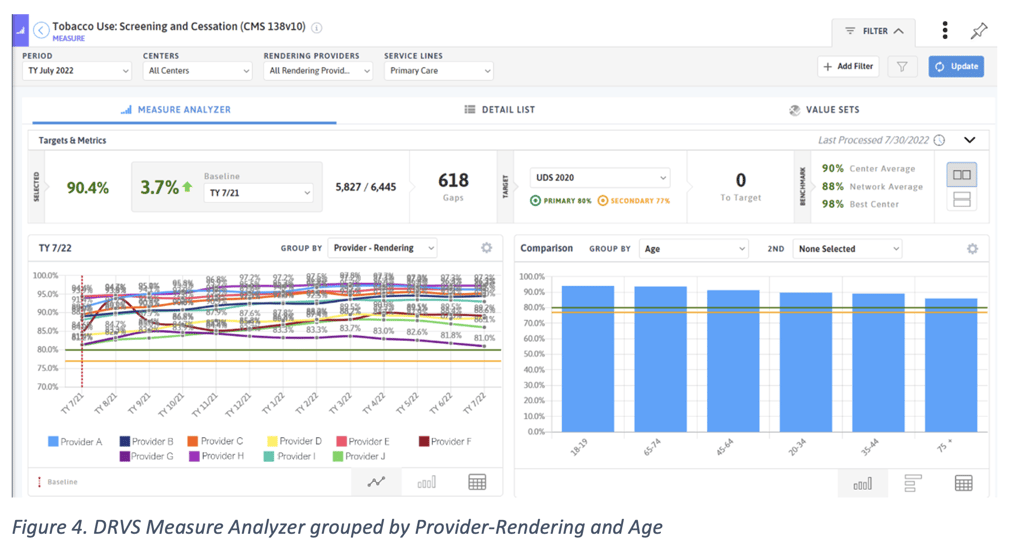
Similarly, users can create a custom dashboard to display trends in their tobacco screening and cessation rates and look at the overall prevalence of tobacco use in their population. The dashboard below looks at screening and cessation rates for both the Trailing Year and Calendar Year periods. The next two rows look at the denominator and numerator of the Tobacco Use: Screening (CMS 138v10 Modified Pop 1) and Tobacco Use: Cessation (CMS 138v10 Modified Pop 2) measures respectively.
Finally, I used a comparison chart to examine screening rates at different centers, but you could easily compare locations, providers, or patient characteristics instead. The dashboard I created in DRVS (below) is very similar to the dashboard LPCA shared in the NACHC TCCP.
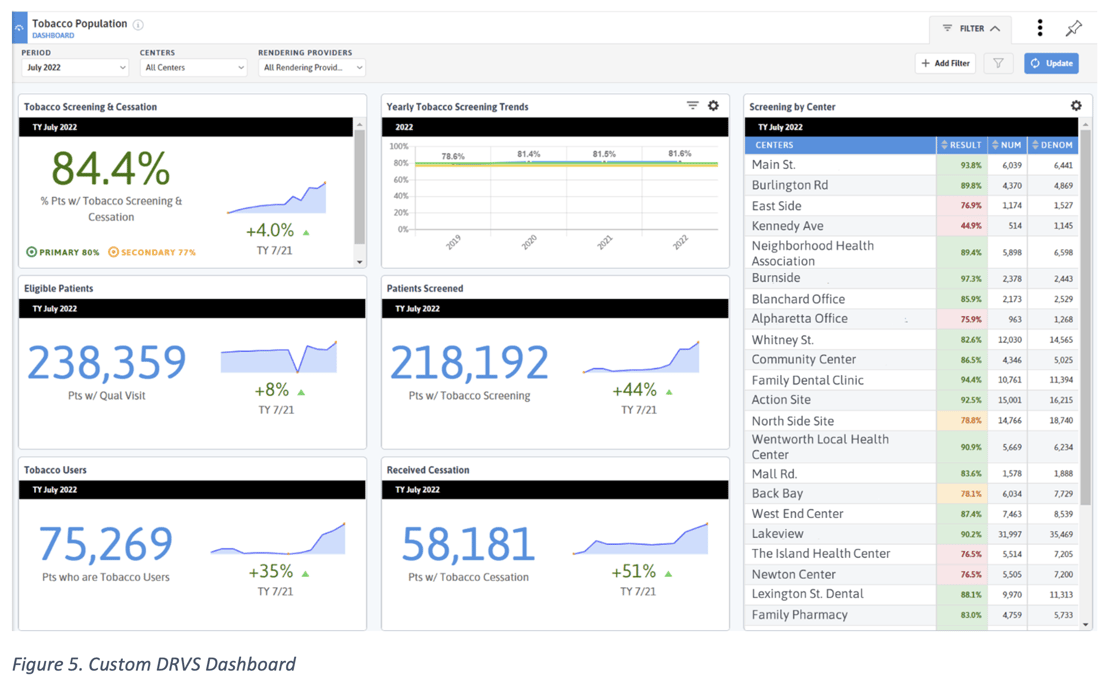
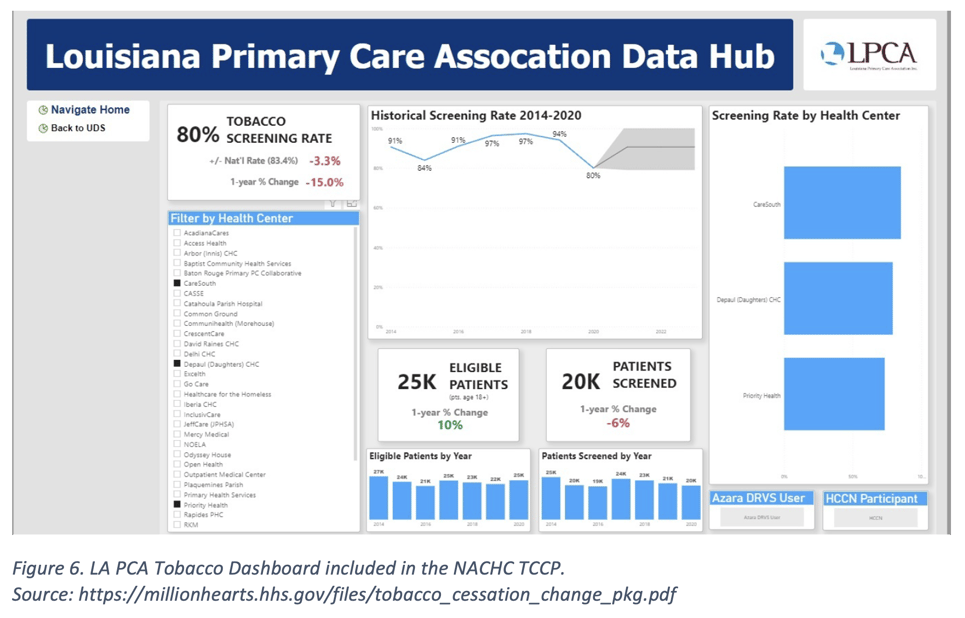
To track your tobacco population to see if they receive cessation counseling or medications and to understand other screening history and potential comorbidities, create a custom registry and filter the detail list to patients with a Tobacco Status of “Y”. Here care team members, such as pharmacy staff, can see if patients are on a tobacco cessation medication and if they are due for any other preventive measures like depression screening or flu shots.
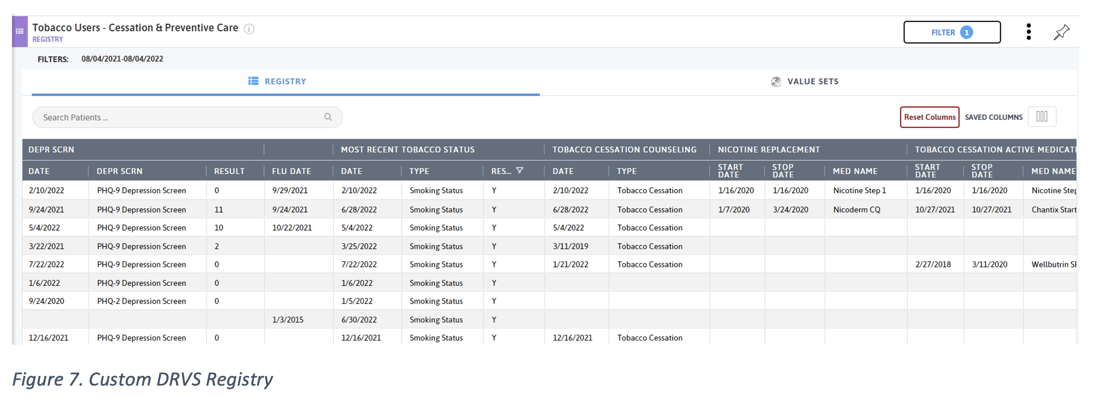
Finally, in partnership with two health centers, Azara developed one measure and four alerts to assist practices in identifying patients who may benefit from lung cancer screening. Based on the 2021 USPSTF recommendations, the measures look for patients 50 to 80 years old who have a 20 pack-year smoking history and currently smoke or have quit within the past 15 years who have had a screening for lung cancer with low-dose computed tomography (LDCT) within the last 12 months.
One of the alerts follows the same criteria, while the other three prompt the care team to document patients’ smoking start and quit dates and cigarettes per day. If you are interested in learning more about the lung cancer functionality in DRVS, please contact solutions@azarahealthcare.com.
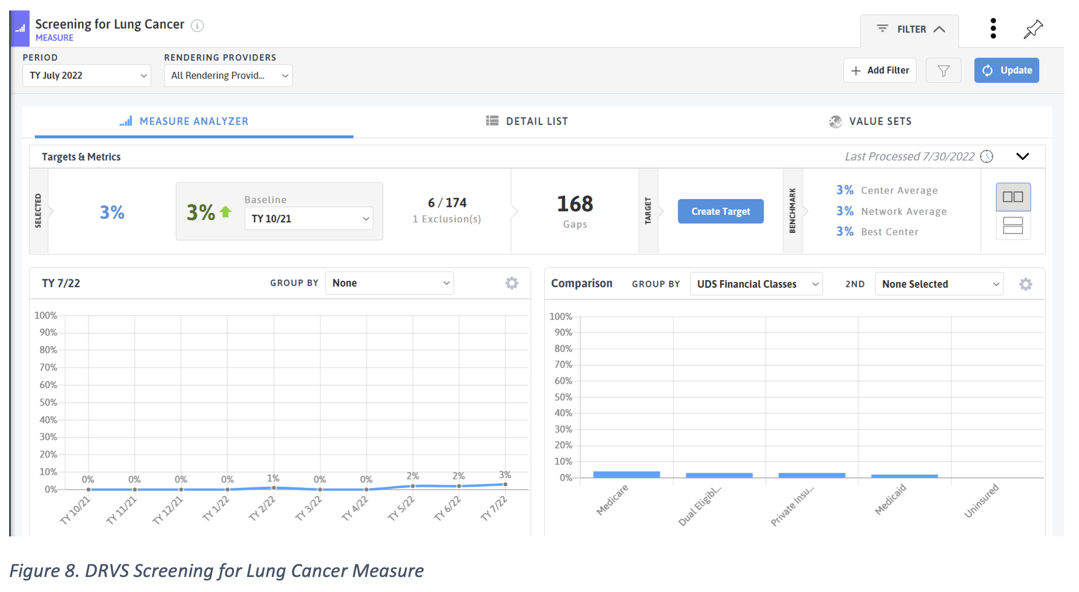
Additional Cessation Support
Smoking and tobacco use place a large burden on society, but there are tools to help individuals quit. Quitting smoking has health benefits, regardless of age or how long they have been smoking. Referrals to quitlines, medication, and brief counseling are all shown to improve cessation rates. NACHC found that even small incentives like gift cards, raffle drawings, and hand-written cards helped patients stick to their goals. Explore the CDC, the Million Hearts® TCCP, and NACHC’s TCCP Health Center adaptation to find resources that work best for your organization and patient population.
We always love to hear how you are using DRVS to support your work. Send your success to feedback@azarahealthcare.com.
Related Articles

Value-Based Care Foundations Part 2: A New Chapter in Risk Adjustment
Explore Insights
Socioeconomic Status, Access, and Control: Rethinking Diabetes Outcomes
Explore Insights
